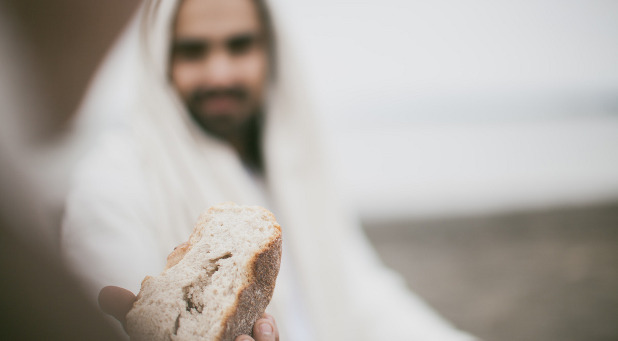Passover Celebration Clearly Points to This
Every year at this time, Jewish people all over the world come together and act out the death and resurrection of Jesus, or Yeshua, as we call Him in Hebrew. Yes, it is true.
Unwittingly, Jewish families throughout the globe will joyfully carry out a tradition that looks just like the work of Yeshua 2000 years ago. Yochanan, or John, saw his cousin Yeshua coming towards him in John chapter 1. He confessed: “Behold, the Lamb of God, who takes away the sin of the world!”
The idea of a Lamb shedding his blood to cover ones sin comes from the Passover narrative. The Israelites took the blood of an innocent lamb and put it on the doorposts of their homes.
In the Passover meal, matzah or unleavened bread plays an important role. The cracker-like bread had the unique characteristics that Isaiah claimed the Messiah would have. The prophet says, “He was pierced for our transgressions, he was bruised for our iniquities, and by His stripes we are healed.” (Is. 53:5)
The matzah is pierced, bruised and striped, just like Yeshua’s body was. But matzah is unique in another way—the most obvious way—it has no leaven. Leaven in the Scriptures often symbolizes sin. Yeshua took this piece of unleavened bread from the Passover table and said, “This is my body.” In doing so, he did what no other man before or since could do: He claimed to be sinless.
Just as the Passover lamb had to be without defect (Ex. 12:5), Yeshua had to be sinless. Simon Peter picks up on the Passover theme and says.
“For you know that it was not with perishable things such as silver or gold that you were redeemed … but with the precious blood of Messiah, a lamb without blemish or defect” (1 Pet. 1:18-19).
In the modern Passover Seder, the leader takes the middle piece of matzvah and breaks it in half. In same way, Yeshua broke the bread and said, “Take, eat; this is My body which is broken for you.” (1 Cor. 11:24).
The leader then takes half the matzah and wraps it in a white linen napkin. Yeshua was taken down from the tree, and his dead body was also wrapped in white linen. Next, the leader will hide the matzah and the children will search for it after the meal. The finder will bring it back to the leader for a prize.
Likewise, Yeshua was hidden away for three days and but did not stay hidden. He rose from the dead by the power of the Spirit of God. When we find him, we too receive a reward, but far greater than the going rate on Passover of $5—we receive redemption, the forgiveness of sins—eternal life.
The matzah ceremony is called the Afikomen which some scholars claim is Greek for I will come. Pretty powerful!
So how did such an overt picture of Yeshua end up in the Passover Seder? No one knows for sure, but we do know that the Messianic Jews and non-Messianic Jews were somewhat intermingled for some time after the Messiah’s resurrection—possibly until the destruction of Jerusalem in 135.
It is plausible that Messianic Jews introduced this tradition and as their numbers dwindled because of persecution and assimilation the larger non Messianic Jewish population adopted the tradition.
Either way, intended or not, it clearly points to Yeshua.
















































